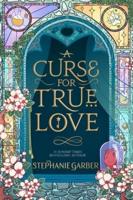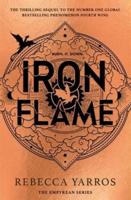Publisher's Synopsis
KING HENRY VII: 1485-1509When King Richard III fell at the Battle of Bosworth, Henry Tudor, Earl of Richmond, became King Henry VII. A Lancastrian, he married Elizabeth of York - young Elizabeth of York in Richard III - and united the two warring houses, York and Lancaster, thus ending the Wars of the Roses. One of his grandfathers was Sir Owen Tudor, who married Catherine of Valoise, widow of King Henry V. The reign of King Henry VII was troubled by Pretenders to the throne; these Pretenders included Lambert Simnell and Perkin Warbeck.- 1.1 -King Henry VII entered the royal Presence Chamber in the King's palace at Westminster. The Bishop of Durham and Sir William Stanley (the Lord Chamberlain) followed him as he walked to the throne. The Earl of Oxford, the Earl of Surrey, Lord Giles Dawbeney, and some guards were also present. King Henry VII began to complain about the Pretenders to the throne - they were disrupting the country.The year was 1495, and the Pretender Perkin Warbeck was gaining support for his claim to the throne of England. Previously, the Pretender Lambert Simnel had caused trouble for King Henry VII.King Henry VII said, "Always to be haunted, always to be pursued, always to be frightened with false apparitions of pageant - mimic - majesty and new-coined greatness, as if we were a mockery, counterfeit King in state, only ordained to lavish sweat and blood, in scorn and laughter, to the ghosts of York, is all below our merits - I don't deserve this trouble!"Richard, the third Duke of York, was the father of King Edward IV and King Richard III and of the Earl of Clarence. The "ghosts of York" were the various Pretenders to the throne - Pretenders who falsely claimed to be descendants of Richard, the third Duke of York. These Pretenders included Lambert Simnel and Perkin Warbeck.Using the royal plural, and comparing himself to a physician, King Henry VII said, "Yet, my lords, my friends and counselors, yet we sit fast in our own royal birthright; the rent face and bleeding wounds of England's slaughtered people have been by us, as if by the best physician, at last both thoroughly cured and set in safety; and yet, for all this glorious work of peace, ourselves is scarcely secure." "Ourselves is" meant "I am." He was using the royal plural."The rage of malice and hatred conjures fresh spirits with the spells of York," the Bishop of Durham said. "For ninety years ten English Kings and princes, threescore great dukes and earls, a thousand lords and valiant knights, and two hundred fifty thousand English subjects have in civil wars been sacrificed to an uncivil thirst of discord and ambition."Long had England been unquiet. In 1399, Henry Bolingbroke usurped the crown from King Richard II and become King Henry IV. The Hundred Years' War with France took place from 1337 to 1453. From 1455-1487, the Yorkists and the Lancastrians fought for power in England in the Wars of the Roses. In 1485, King Henry VII was crowned after the Yorkist King Richard III was killed in the Battle of Bosworth, but King Henry VII still had to fight for a couple of years more. In 1486, King Henry VII, who was a Lancastrian, married Elizabeth of York, thus uniting the two families. Unfortunately, Pretenders to the throne, claiming to be Yorkists, troubled his reign.







